Physical Address
304 North Cardinal St.
Dorchester Center, MA 02124
“Imperforate anus” has been a described entity for centuries. In fact, an early description suggested that “an infant whose anus is not visible should be rubbed with oil and stood in the sun, and where it shows transparent it should be torn cross-wise with a barley grain.” Fortunately, the surgical approach to these conditions has advanced significantly since then.
For many centuries, individuals who practiced medicine have tried to help these children by creating an orifice in the perineum. Those that survived likely had a lower type of defect. Amussat, in 1835, was the first to suture the rectal wall to the skin (the first actual anoplasty). Stephens made a significant contribution by performing the first anatomic studies in human autopsies and, in 1953, proposed a surgical treatment using a sacral approach followed by an abdominoperineal operation. The key to his procedure was the preservation of the puborectalis sling, considered vital to maintaining fecal incontinence. Over the next 25 years, different surgical techniques were described, with the common denominator being the protection and use of the puborectalis sling.
A student of Stephens, Justin Kelly, brought this technique to Boston, where he had undergone some training. A co-trainee, Alberto Pena, learned this technique and modified it on returning to Mexico, in collaboration with Peter Devries, by lengthening the perineal incision to improve exposure. In 1980, for the first time, Pena performed a posterior sagittal approach for the treatment of a baby with imperforate anus. With this approach, the improved visualization allowed the surgeon to more safely separate the rectum from the adjacent structures and created the field of pediatric colorectal surgery.
An anorectal malformation is a relatively common congenital anomaly, occurring in one out of every 4000–5000 newborns, and is slightly more common in males. The estimated risk for a couple having a second child with an anorectal malformation is approximately 1%. The most frequent defect in males is anorectal atresia with a rectourethral fistula. In females, it is a rectovestibular fistula. Anorectal atresia without a fistula is a rather unusual defect, occurring in about 5% of patients, and is associated with Down syndrome. Historically, a cloacal anomaly had been considered an unusual defect, while a rectovaginal fistula was commonly reported. However, it is now clear that a cloaca is more common, whereas a rectovaginal fistula is rare. Likely, most females with a cloaca were erroneously thought to have a rectovaginal fistula, a misdiagnosis which led to an operation in which repair of the rectal component was performed, but the patient was left with a persistent urogenital sinus. A rectobladderneck fistula in males is the only malformation where the rectum enters the urinary tract just at the peritoneal reflection, and occurs in about 10% of cases. As it is the only malformation in males in which the rectum is unreachable through a posterior sagittal incision, it requires an abdominal approach (via laparoscopy or a laparotomy) in addition to the perineal approach. A true rectal atresia or stenosis is a rare anomaly, and the anal canal itself is nearly normal.
Anorectal malformations represent a wide spectrum of defects. The terms low , intermediate , and high are arbitrary and should no longer be used. A therapeutic and prognostically oriented classification is depicted in Box 35.1 .
Males
Rectoperineal fistula
Rectourethral bulbar fistula
Rectourethral prostatic fistula
Rectobladderneck fistula
Imperforate anus without fistula
Rectal atresia/rectal stenosis
Females
Rectoperineal fistula
Rectovestibular fistula
Cloaca
Complex malformations
Imperforate anus without fistula
Rectal atresia/rectal stenosis
A rectoperineal fistula is the lowest type of defect. The rectum is located within most of the sphincter mechanism except for the lowest part, which is anteriorly mislocated ( Fig. 35.1 ). Sometimes, the fistula does not open into the perineum but rather follows a subepithelial midline tract, opening somewhere along the midline perineal raphe, scrotum, or even at the base of the penis ( Fig. 35.2 ). The diagnosis of this malformation is established by perineal inspection. Usually, the fistula opening is stenotic and its distal most extent is fibrous tissue. The terms covered anus, anal membrane, anteriorly mislocated anus, and bucket-handle malformations all refer to rectoperineal fistulas.
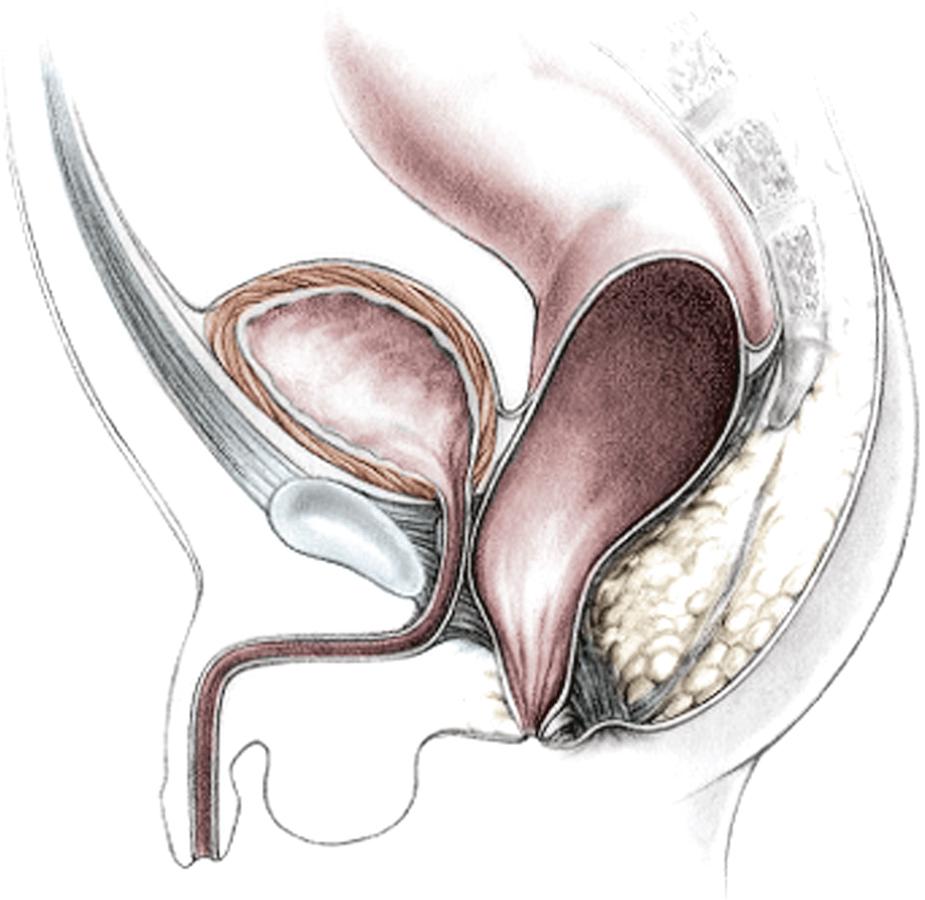
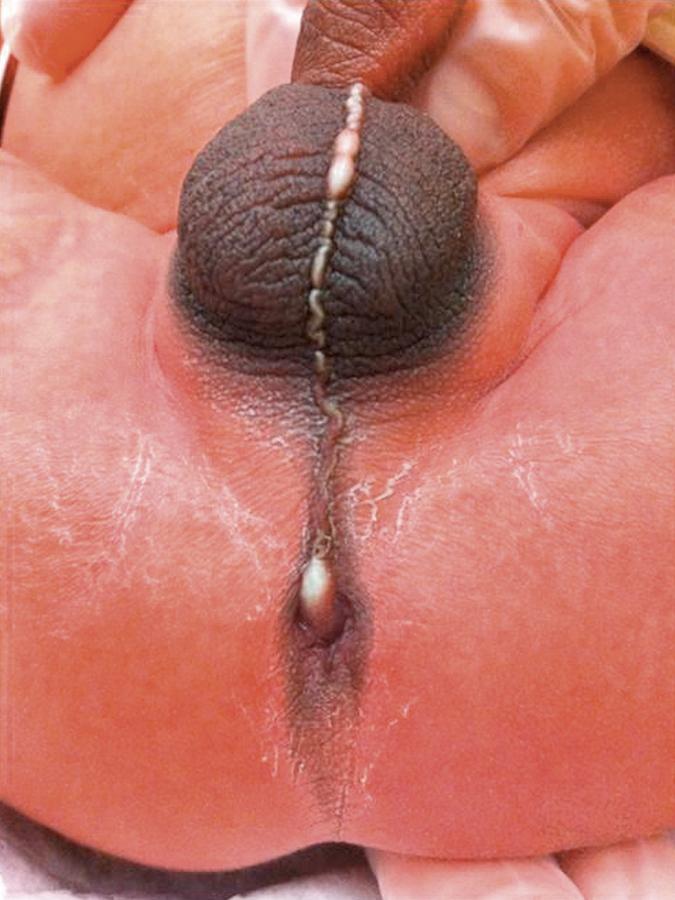
Anorectal atresia with a rectourethral fistula is the most common defect in males. The fistula may be located at the lower (bulbar) or the higher (prostatic) part of the urethra ( Fig. 35.3 ). Immediately above the fistula, the rectum and urethra share a common wall. The lower the fistula, the longer the common wall between the rectum and urethra. This vital anatomic fact guides the operative plan. The rectum is usually distended and surrounded laterally and posteriorly by the levator muscle. Between the rectum and the perineal skin, voluntary muscles, called the muscle complex, are present. The contraction of these muscle fibers elevates the skin of the anal dimple. At the level of the skin, a group of muscle fibers, called parasagittal fibers, are located on both sides of the midline. Lower urethral fistulas are usually associated with good-quality muscles, a well-developed sacrum, a prominent midline groove, and a prominent anal dimple. Higher urethral fistulas are more frequently associated with poor-quality muscles, an abnormally developed sacrum, a flat perineum, a poor midline groove, and a barely visible anal dimple. Occasionally, the infant passes meconium through the urethra, which is an unequivocal sign of a rectourinary fistula.
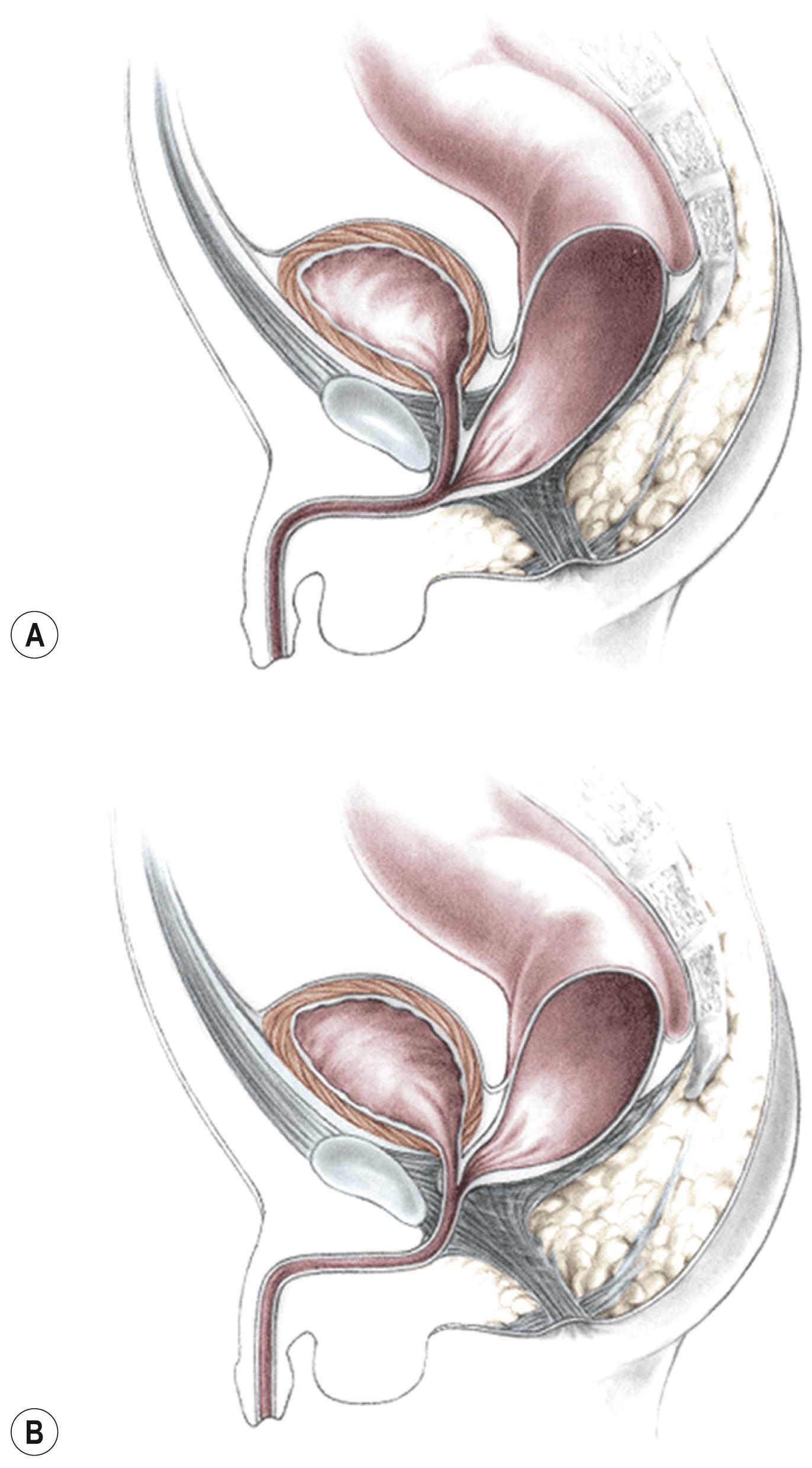
In this defect, the rectum opens into the bladder neck ( Fig. 35.4 ), and usually carries a poor prognosis for bowel control because the levator muscles, the striated muscle complex, and the external sphincter usually are all poorly developed. The sacrum is often deformed and short. In fact, the entire pelvis seems to be underdeveloped (caudal regression). The perineum is often flat, which is evidence of poor muscle development. About 10% of males fall into this category.
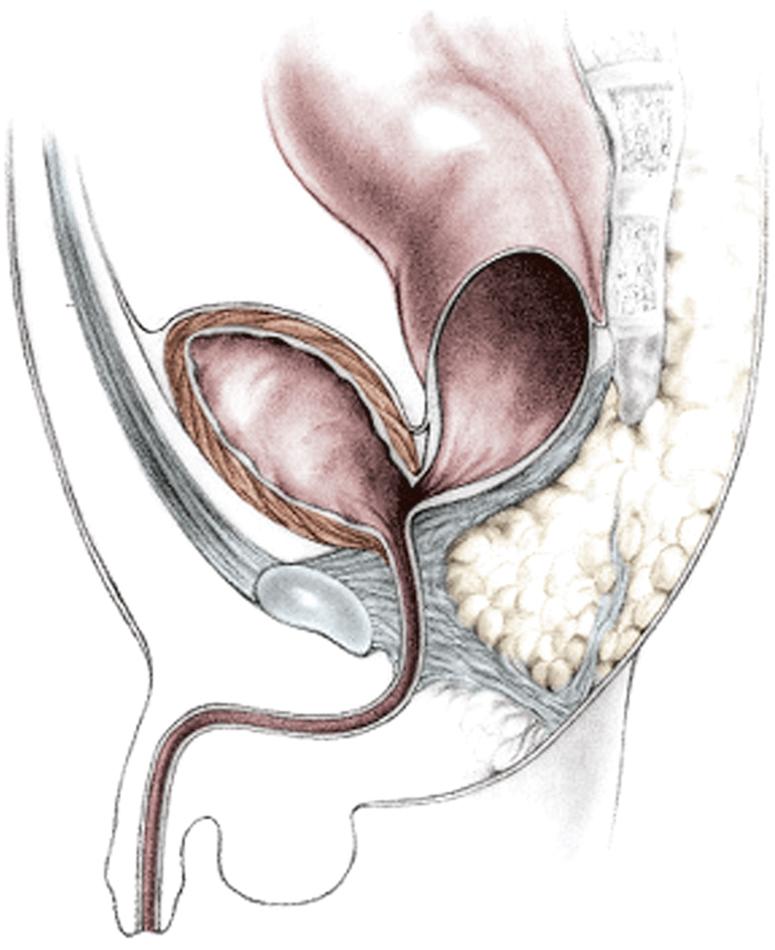
Most patients with this defect have a well-developed sacrum and good muscles, and have a good prognosis for bowel function. The rectum usually ends blindly approximately 2 cm from the perineal skin. Although the rectum and urethra do not communicate, these two structures are separated only by a thin common wall. About half of the patients with no fistula also have Down syndrome, and >90% of patients with Down syndrome and anorectal atresia have this specific defect, suggesting a chromosomal link. The fact that these patients have Down syndrome does not seem to interfere with their good prognosis for bowel control.
In this unusual defect in males (<1% of the entire group of malformations), the lumen of the rectum is totally (atresia) or partially (stenosis) interrupted. The upper pouch is a dilated rectum, and the lower portion empties into a small anal canal that is in the normal location and is 1–2 cm deep ( Fig. 35.5A ). These two rectal structures may be separated by a thin membrane or by dense fibrous tissue. The repair involves a primary anastomosis between the upper pouch and lower anal canal, and is ideally approached posteriorsagittally with splitting of the anal canal longitudinally ( Fig. 35.5B ). Patients with this defect have all the necessary elements of continence and have an excellent functional prognosis because they have a well-developed anal canal, normal sensation in the anorectum, and normal voluntary sphincters. These patients must be screened for a presacral mass.
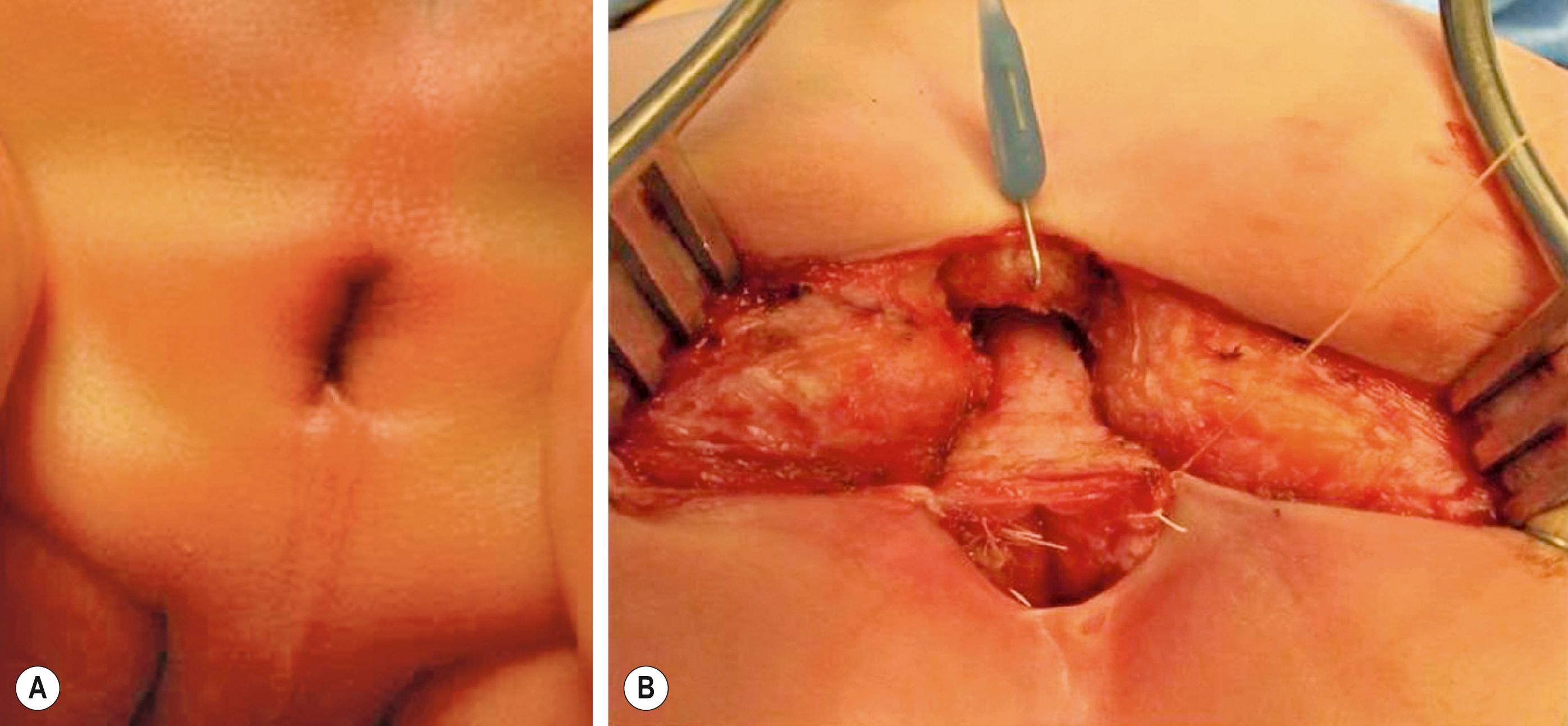
This common defect is similar to the perineal fistula described in the male patient. The rectum is well positioned within the sphincter mechanism, except for its lower portion, which is anteriorly located. The rectum and vagina are well separated ( Fig. 35.6 ). The key anatomic issues are the location of the anal opening in relation to the sphincter mechanism, and the length of the perineal body.
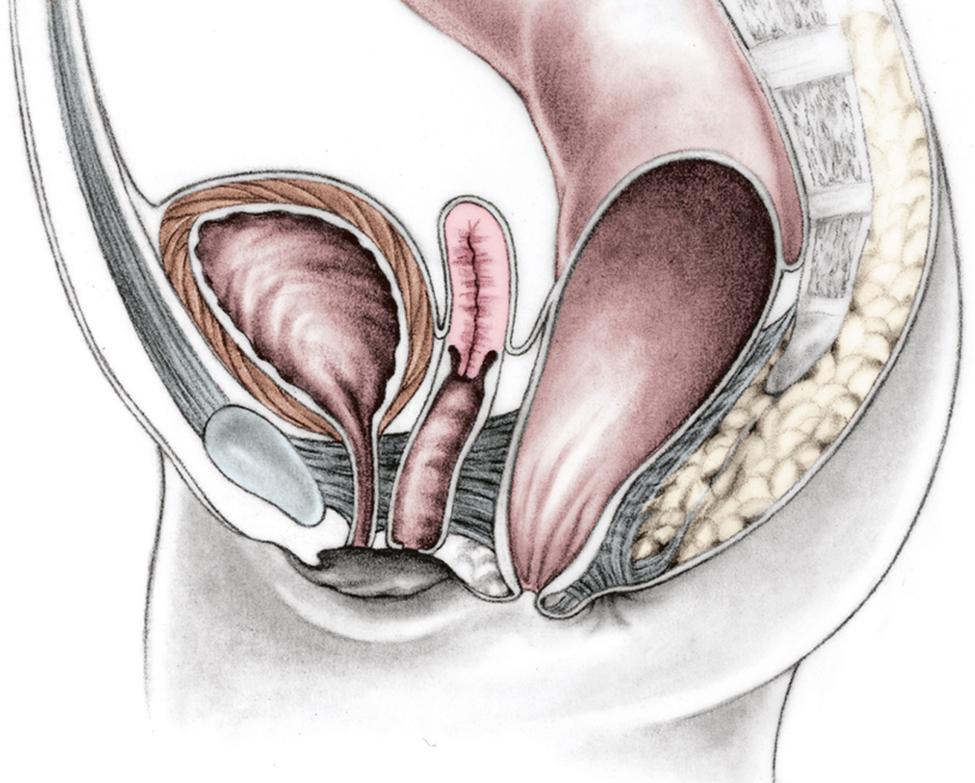
Rectovestibular fistula is the most common defect in females and has an excellent functional prognosis. The diagnosis is based on clinical examination. A meticulous inspection of the newborn’s genitalia allows the clinician to see that there is a normal urethral meatus and a normal vagina, with a third hole in the vestibule, which is the rectovestibular fistula ( Fig. 35.7 ). About 5% of these patients will have two hemivaginas with a vaginal septum.
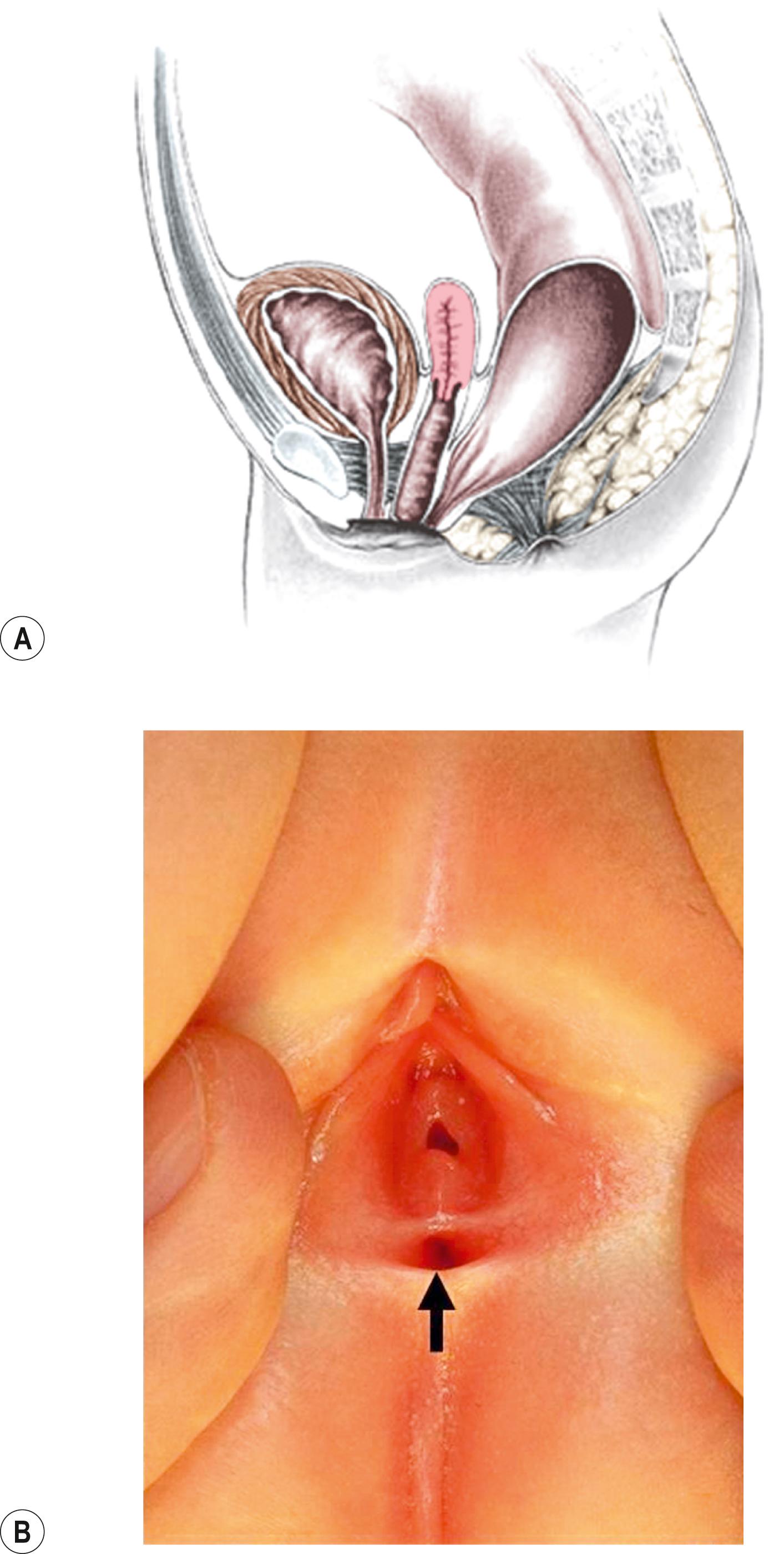
This defect can be repaired without a protective colostomy by an experienced surgeon. The advantage of this approach is that it avoids the potential morbidity of a colostomy and reduces the number of operations to one from as many as three (colostomy, main repair, and colostomy closure). Many patients do very well with a primary neonatal (or early newborn) operation without a protective colostomy. This approach should be balanced against the potential risk of a perineal infection and dehiscence of the anal anastomosis or perineal body. The decision to perform a colostomy or to perform a primary repair in these patients must be made individually by the surgeon based on his or her experience and the clinical condition of the patient.
This defect in females carries the same therapeutic and prognostic implications as the one described for male patients.
A cloaca is the extreme in the spectrum of complexity of female malformations and occurs when the distal portions of the rectum, vagina, and urinary tract fuse and create a single common perineal channel. The diagnosis of a cloaca is a clinical one. It should be suspected in a female born with anorectal atresia and small-looking genitalia. Careful separation of the labia discloses a single perineal orifice. The length of the common channel varies from 1–8 cm, and this measurement, along with the urethral length, are the key factors for operative and prognostic implications ( Fig. 35.8 ). A common channel of <3 cm usually means that the defect can be repaired with a posterior sagittal operation, provided the urethra is at least 1.5cm, usually using a total urogenital mobilization technique without opening the abdomen. Common channels longer than 3 cm are more complex, mobilization of the vagina is often difficult, the vagina may need to be separated from the common channel, and some form of vaginal replacement may be needed during the definitive repair. On occasion, the rectum opens high into the dome of the vagina ( Fig. 35.9 ), and an abdominal approach is needed to mobilize it.
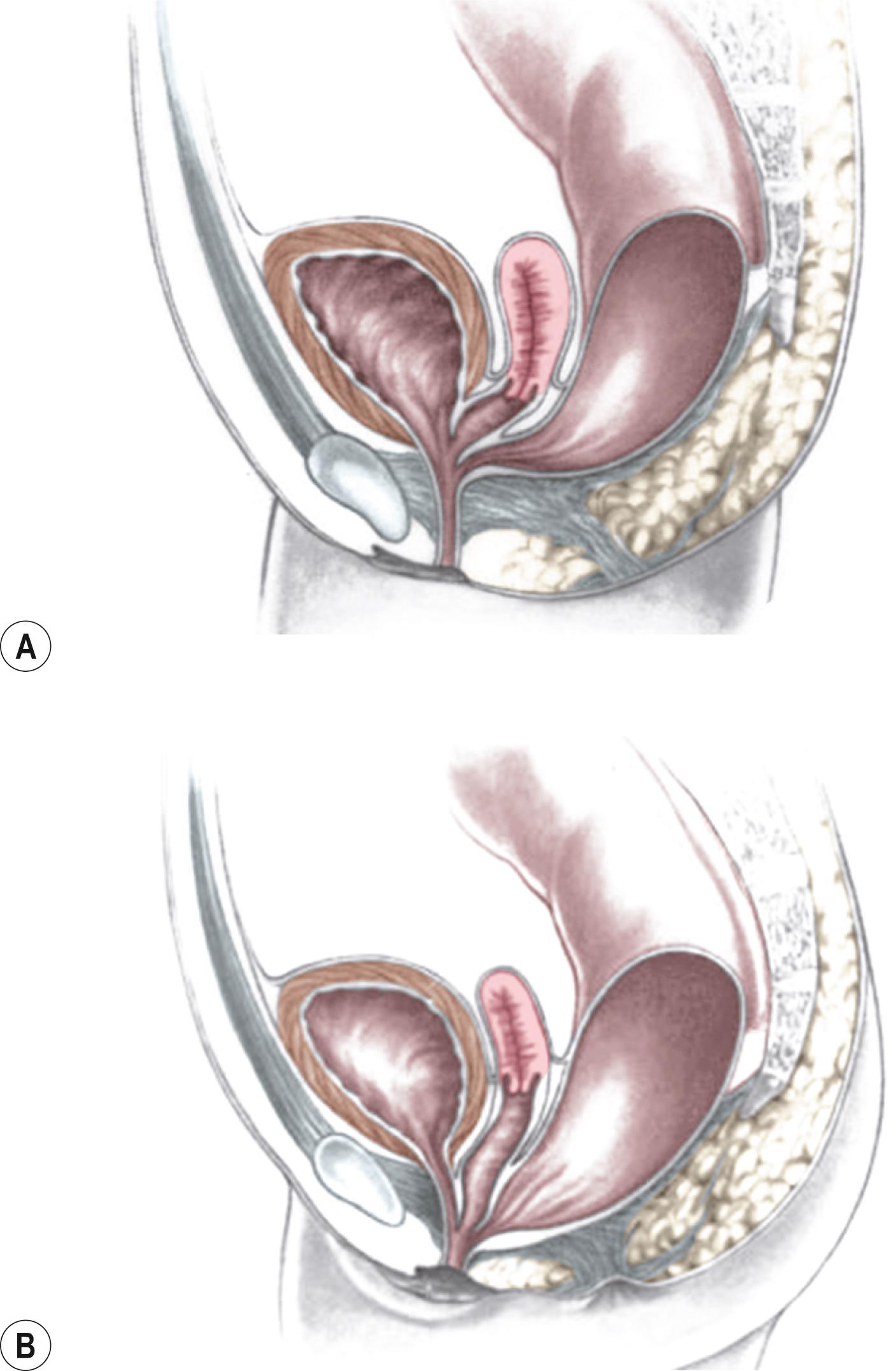
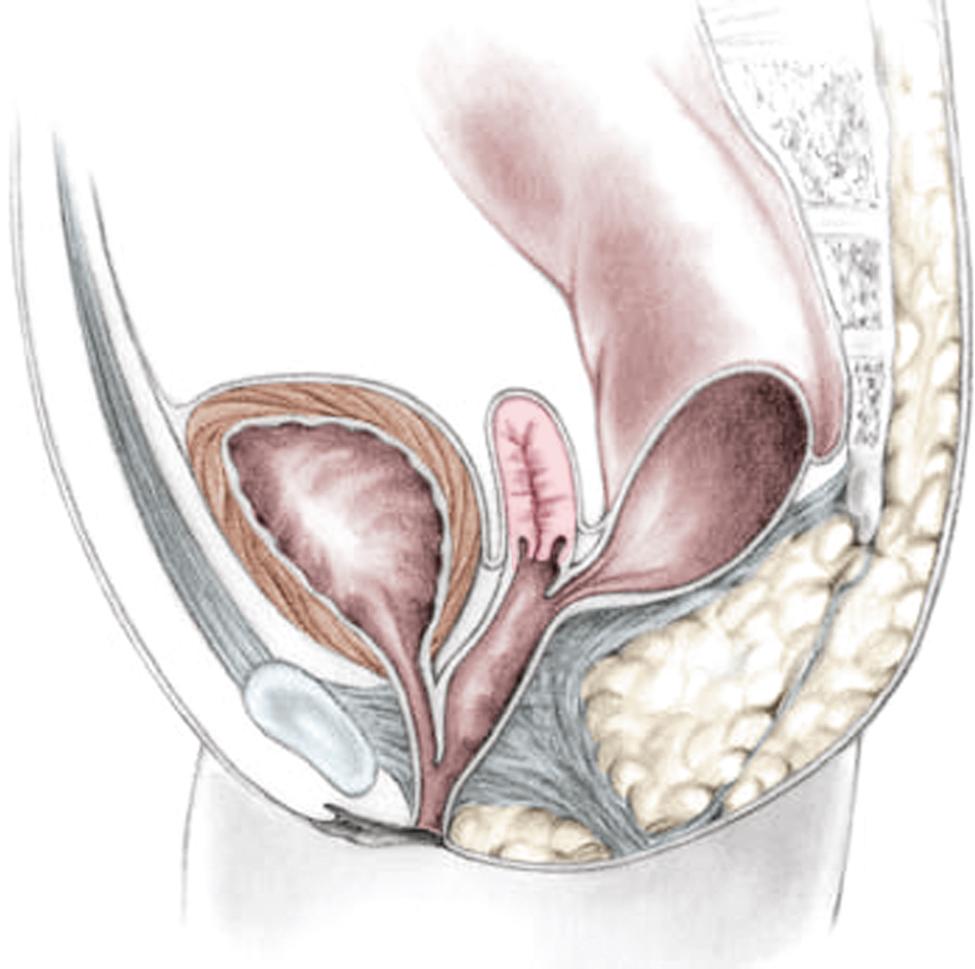
Frequently, the vagina is distended with urine and vaginal mucous (hydrocolpos) ( Fig. 35.10A ). The distended vagina compresses the trigone, interferes with drainage of the distal ureters, and is frequently associated with hydronephrosis. This condition may be diagnosed prenatally. The dilated vagina can also become infected (pyocolpos) and may lead to perforation and peritonitis. Such a large vagina may represent a technical advantage for the repair as there is more vaginal tissue to facilitate the reconstruction. A frequent finding in cloacal malformations is the presence of different degrees of vaginal and uterine septation or duplication ( Fig. 35.10B ). In such patients, the rectum usually enters between the two hemivaginas. During puberty, a variety of anatomic anomalies may mean that the patient may be unable to drain menstrual blood through the vagina, and she can accumulate fluid in the peritoneal cavity. An evaluation of the patient’s Müllerian anatomy, either at the time of the definitive repair, at colostomy closure, or during another procedure such as a laparoscopic Malone operation, is very important and can prevent future problems. Short common channel cloacas (<3 cm) are usually associated with a well-developed sacrum, a normal-appearing perineum, and adequate muscles and nerves. Therefore, a good functional prognosis for this lower type cloaca can be expected. The converse is true for higher cloacas.
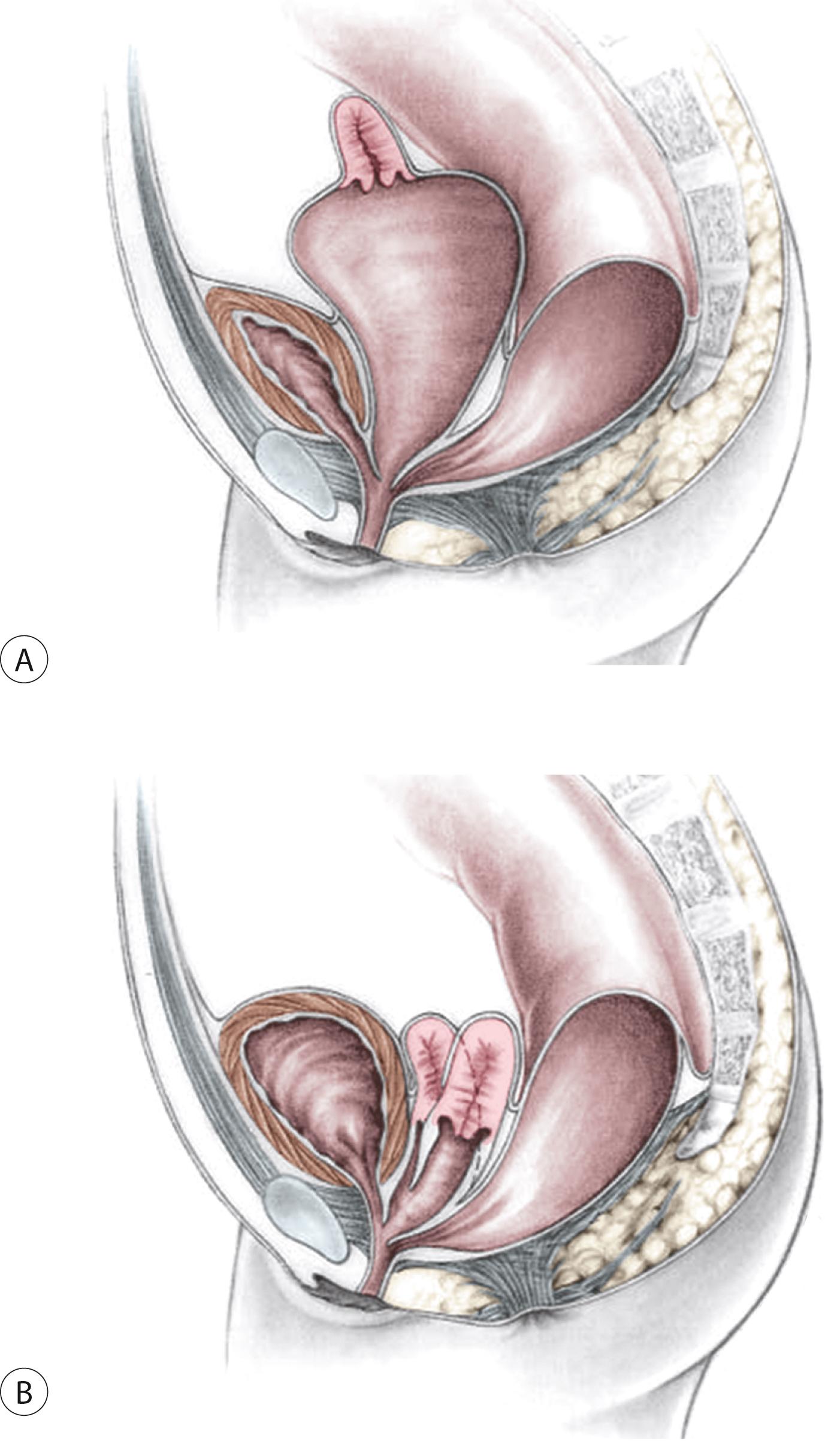
Become a Clinical Tree membership for Full access and enjoy Unlimited articles
If you are a member. Log in here